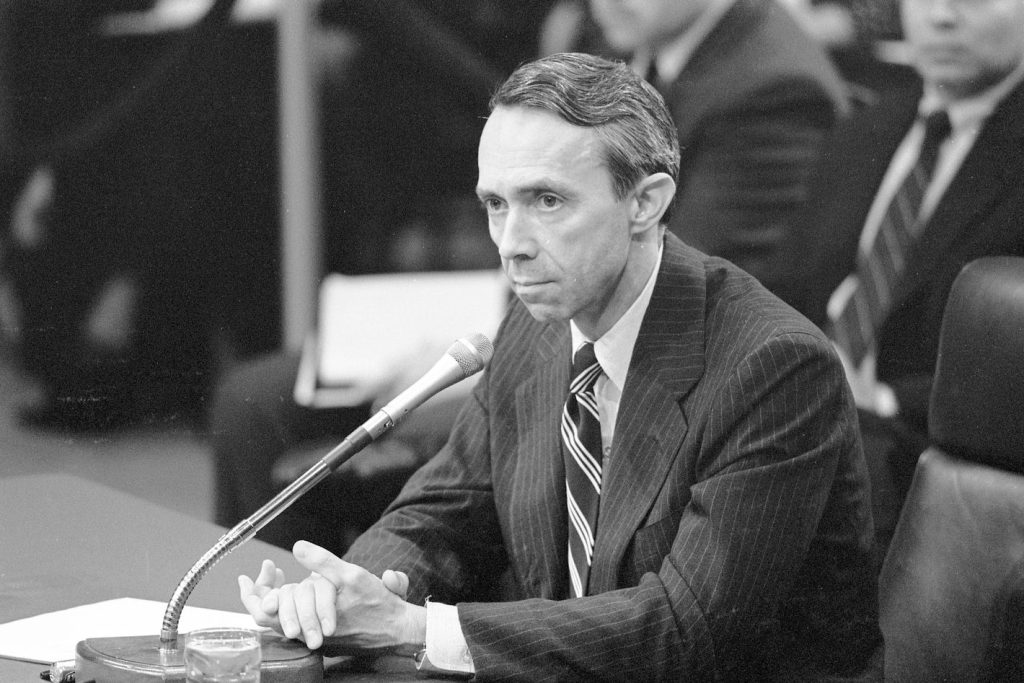CQ-Roll Call/Getty Images
David Souter, the former U.S. Supreme Court justice who retired at the age of 69 and died this week at 85, was viewed by liberals as a man of conservative temperament, if not necessarily conservative views. New York Times legal columnist Linda Greenhouse presented this take on Souter succinctly:
Justice Souter portrayed himself as he was: a judge of basically conservative instincts who took as his role model Justice John Marshall Harlan II, a distinguished New York lawyer and an Eisenhower appointee who was often in dissent during the heyday of Supreme Court liberalism under Chief Justice Earl Warren.
Justice Harlan nonetheless viewed the Constitution as a charter of “ordered liberty,” the meaning of which could evolve over time to encompass concepts not explicitly mentioned in the text, such as the right to privacy. David Souter saw the Constitution in the same light. Only in the increasingly partisan and polarized climate of the 1990s and later could an interpretive stance that was once so widely held as barely debatable come to be viewed as the hallmark of a judicial liberal.
To conservatives, Souter wasn’t just a “judicial liberal” appointed by a Republican president. They were used to that, since Dwight D. Eisenhower placed Earl Warren and William Brennan on the Court, and Richard M. Nixon was responsible for Roe v. Wade’s principal author Harry Blackmun. What made Souter an eternal cautionary tale for the right was his alleged “stealth” liberalism. George H.W. Bush appointed Souter mostly because he was assured that the relatively obscure New Hampshire judge would be a solid choice by Granite State senator Warren Rudman, and by Rudman’s friend, White House chief of staff John Sununu. Souter’s relatively limited record and public profile made him an attractive pick at the time, as fiery liberal opposition had recently brought down Ronald Reagan’s Court nominee, Robert Bork. Souter was easily confirmed, with every single Senate Republican voting for him.
When Souter’s liberalism, particularly on abortion rights, became apparent, the conservative fury aimed at Bush — already a suspect figure on the right for decades — was intense. But even before he outraged the right by helping save abortion rights in the 1992 decision Planned Parenthood v. Casey, Souter’s heterodoxy was apparent enough that it influenced Bush’s next Supreme Court pick. Clarence Thomas was seen as both an appropriate successor to the first Black justice, Thurgood Marshall, and a serious ideological conservative. Thus, Souter inadvertently teed up the long career of the most intensely conservative justice since the 19th century.
The growing sense that both Bush and Souter had betrayed the conservative cause, as part of a long pattern of Supreme Court perfidy by GOP presidents, led to demands for serious and transparent ideological vetting of potential justices going forward. For a while, the long tradition of treating judicial nominations as apolitical and even bipartisan inhibited such demands. But “no more Souters” became a powerful conservative rallying cry. The yearslong escalation of the right’s vetting demands culminated in the three justices appointed by Donald Trump, after he outsourced the vetting process to the Federalist Society and the Heritage Foundation.
So putting aside his specific impact on the Court and on constitutional law during 18 momentous years at the Supreme Court, David Souter was in many respects the last Supreme Court nominee from either party who could be nominated and confirmed without intense partisan and ideological scrutiny. Souter himself may have reflected this with his decision to retire from the Court soon after Barack Obama was elected president, ensuring another liberal (in this case, Sonia Sotomayor) joined the Court. It was one final gesture of quiet defiance to the conservatives who made his name a curse.

